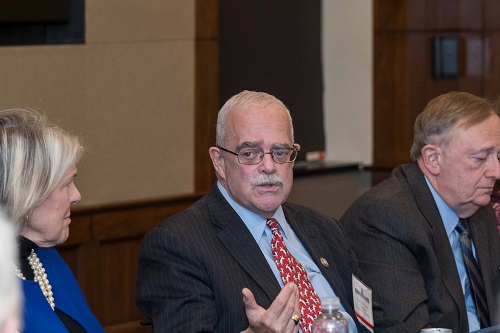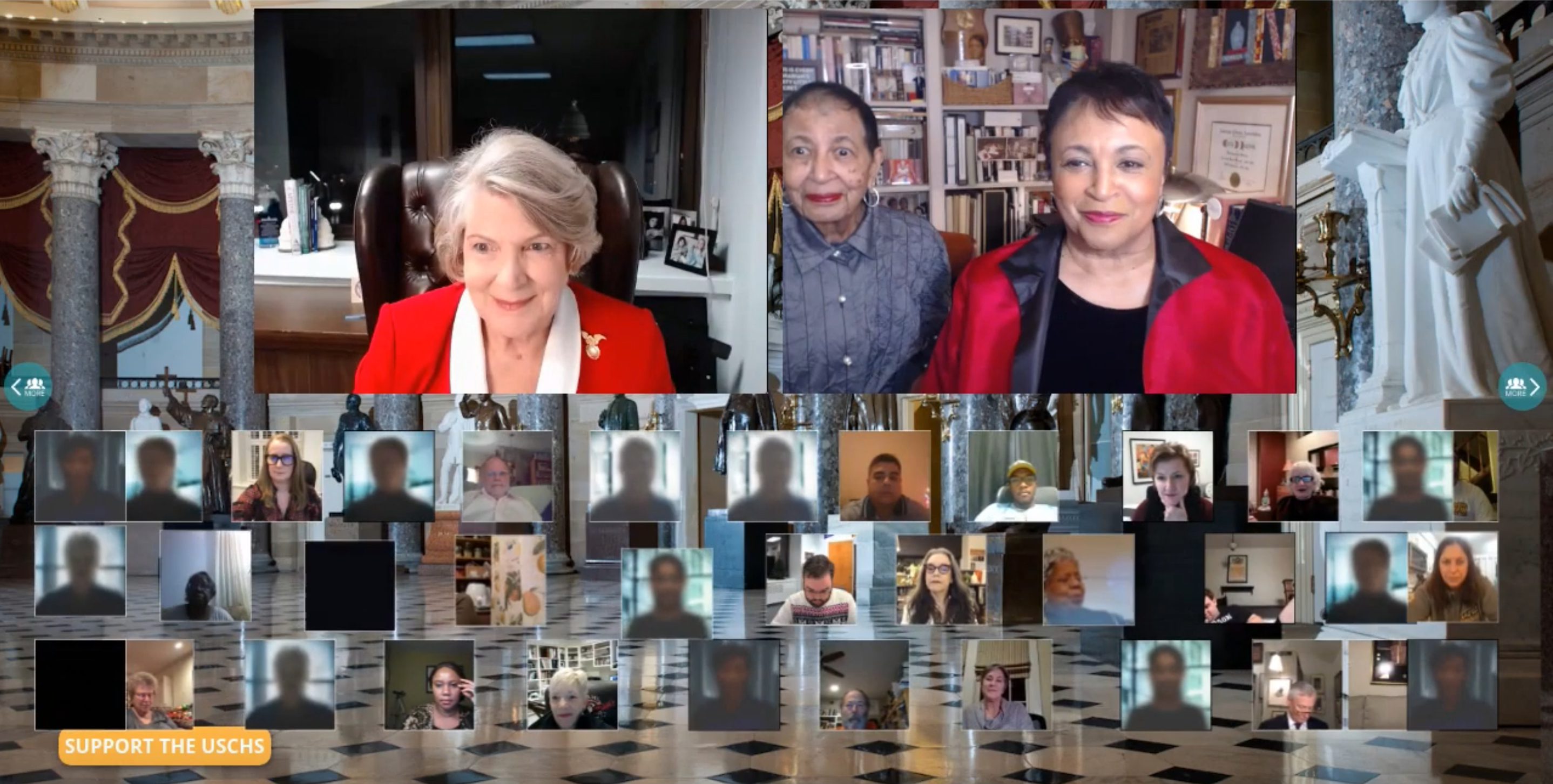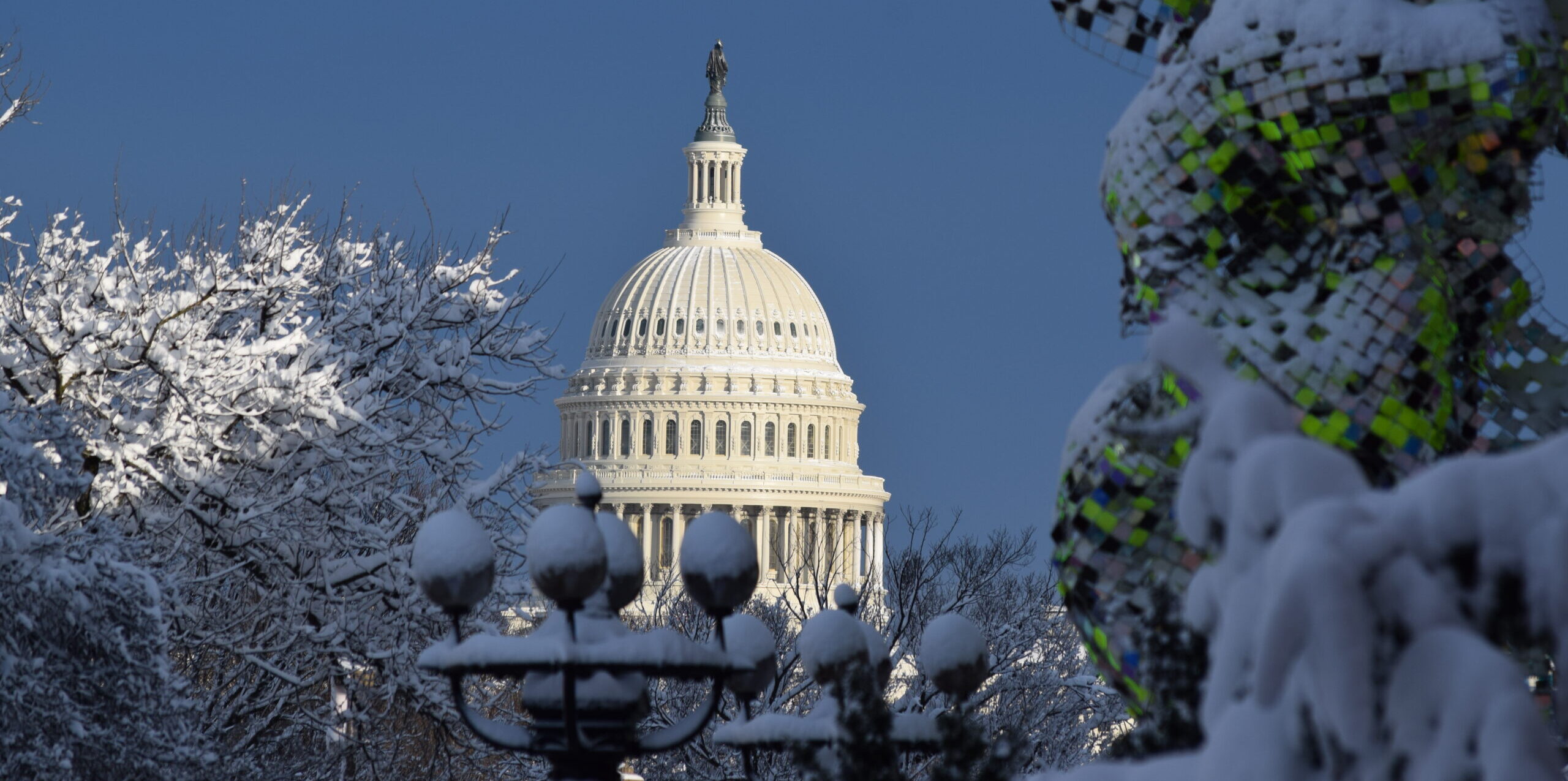The Cox Corridors contain some of the most outstanding narrative and historical art in the U.S. Capitol. These murals are located on the first floor of the House wing and depict significant events and periods in American history. The corridors were painted by artist Allyn Cox and later finished by Jeffrey Greene after Cox’s death. Their work includes the Great Experiment Hall, which contains art that focuses on the nation’s founding, and significant events and actions in our history; the Hall of Capitols, which is adorned with images of buildings that housed the Continental and U.S. Congresses; and the Westward Expansion Corridor, which holds paintings of the United States’ expansion and its many landscapes to explore. The House did not initially choose to follow the Senate in decorating its corridors. It did, however, accept the offer of the United States Capitol Historical Society to fund the painting of the Cox Corridors; while the National Society Daughters of the American Revolution contributed the funds that paid for the Great Experiment Hall as part of the Nation’s Bicentennial in 1976. Cox worked on the paintings in the 1970s and 1980s; however, after his death in 1982, the search for a new artist to continue the unfinished murals began, which caused a delay in the process. Greene was eventually chosen as Cox’s replacement, and he finished the Westward Expansion Hall in 1994.
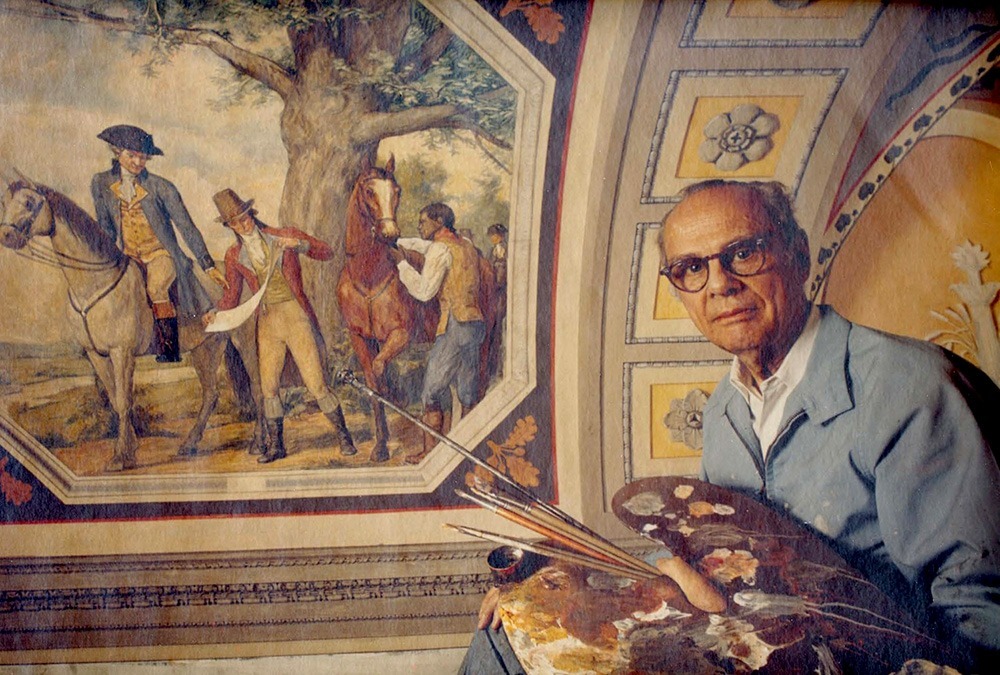
The Westward Expansion Hall of the Cox Corridors contains some of the Capitol’s most vivid imagery depicting the American experience. This area of the Capitol is composed of eight maps, 12 scenes, 14 vignettes, and six quotations, as well as end murals and medallions. This area is also ripe with imagery of some of the country’s most compelling resources and significant points of development in its history. Each map portrayed on the ceiling is surrounded by two scenes depicting relevant events from our history. One set of images stands out among these murals: the scenes of the Boston Tea Party and the Battle of Yorktown. They depict one of the first and last major moments of the Revolutionary War era that created the United States. The scene of the Boston Tea Party is the only place where the event is shown in the Capitol; it focuses on the almost mythical elements of that famous moment of defiance. The moon is shown shining in the night sky, the casks of tea floating in the water. The image of the Battle of Yorktown, on the other hand, is notable for its comparison to the scene’s other depiction in the Rotunda. While the Rotunda’s painting shows the United States’ French allies, they are noticeably left out of the Cox Corridors painting. This decision speaks to the focus on American achievement throughout the corridors.
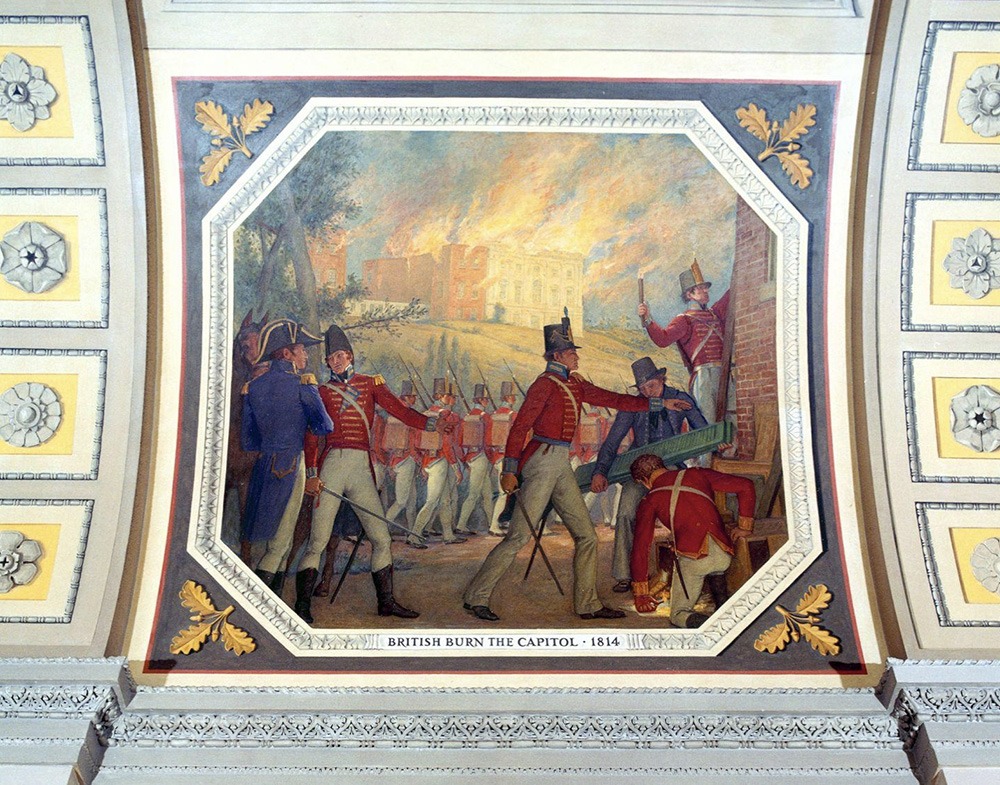
The Hall of Capitols, with the murals completed first, catalogues the many locations in which the U.S. Congress and its predecessors met through the creation of the country and capital. Paintings of locations such as Albany, Annapolis, Baltimore, York, and Trenton memorialize some of the little-known meeting places of Congress. Five images show the evolution of the final Capitol in Washington DC as it was designed, constructed, and expanded. The walls of the corridor also depict moments of significance in the history of the Capitol building itself, including the selection of its location as well as one of its most infamous moments, the British Burning of the Capitol in 1814. The mural of the Capitol site’s 1791 selection portrays Pierre Charles L’Enfant, the city’s first architect and engineer, talking with George Washington and showing his plans. L’Enfant’s choice for the location of the Capitol building was symbolic: he may have designed Washington, D.C. in the style of European cities, but he also diverged from tradition when he placed the people’s Congress at the city’s highest point instead of the leader’s residence. As a result, this scene further underscores the theme of American democracy present throughout these corridors. Conversely, the scene of the British attack on the Capitol does not shy away from portraying a moment of American weakness. It highlights the magnitude of luminous flames on the slowly crumbling building.
The third section of the Cox Corridors, the Great Experiment Hall, focuses on the foundations of America. It combines critical scenes of the country’s founding, including the Continental Congress and the Declaration of Independence, with side images depicting ordinary activities related to the period of the central murals. In this way, it captures momentous events but also the daily life and historical experience of the country’s founders and early settlers.
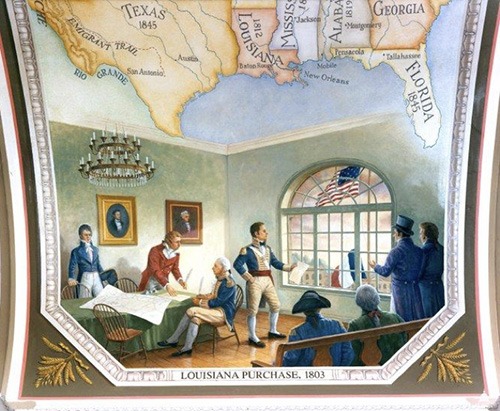
The artistic elements utilized by Cox and Greene in the House wing draw an interesting comparison with art in other government spaces. The Cox Corridors draw from mediums including fresco and oil paint as well as pouncing, a process in which perforations are used to transfer images which are then painted on the wall. This similar process of mural design has been used in public art throughout the country, including many of the post office decorations that were commissioned through President Franklin D. Roosevelt’s New Deal. In addition to style of painting, many of the figural and narrative aspects of the Corridors are reminiscent of these examples of American public art.
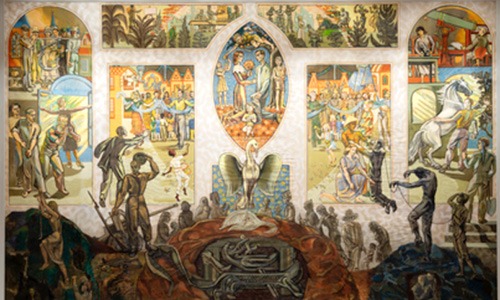
It is also important to note the events, people, and places which were consciously excluded from the corridor. While the corridors do depict different indigenous groups, they fail to represent the atrocities that Native Americans experienced at the hands of American settlers. On the other hand, some efforts were made to maintain historical accuracy within the images; one example of this is the image of the “Golden Spike,” a mural showcasing the finish of the railroad connecting the east and west coast. The mural is based on a photograph which excluded the Chinese laborers who had worked on the railroad. The artists added Chinese laborers into the photo’s recreation to recognize their participation in the project.
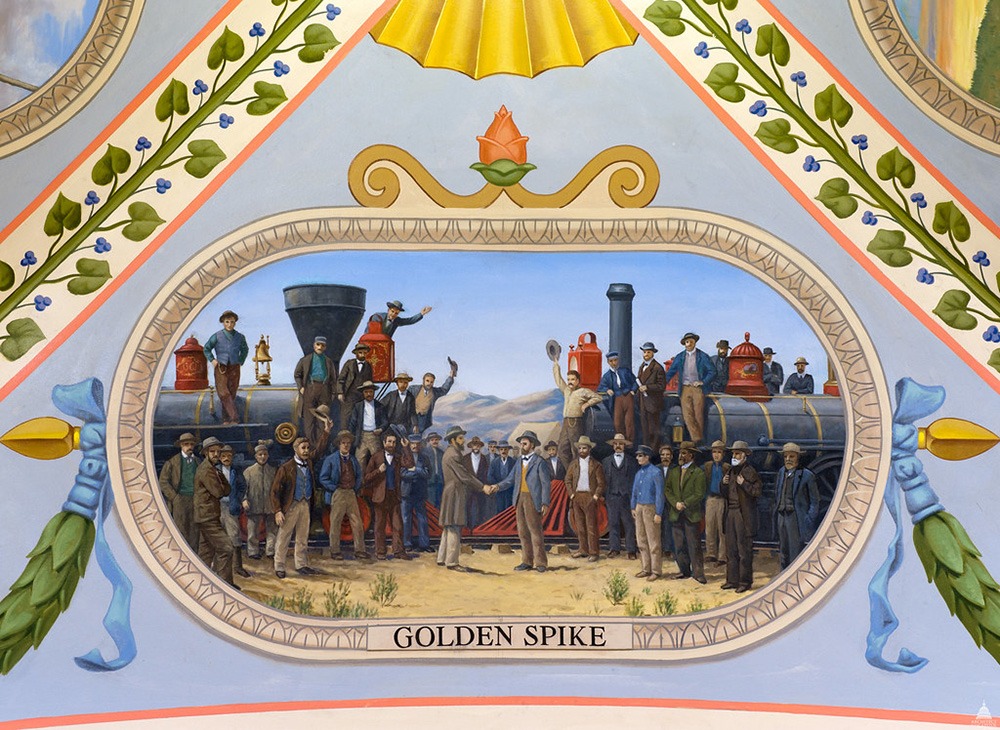
As the Capitol building begins to slowly move towards reopening to the public after surviving the January 6, 2021 insurrection and a global pandemic, its art feels more sacred than ever, and represents the enduring American spirit and the journey of this country’s growth. The art in the Cox Corridors specifically highlights the role that American citizens play in the country’s success, and it serves as a powerful reminder of our agency as individual citizens to work towards further improvement within the nation. It is also interesting to consider whether, at some point in the future, contemporary moments such as the events of January 6th will be added to the Cox Corridors. The art of the Cox Corridors is as much about our history as it is the U.S. Capitol’s.
For more information, be sure to check out our webinar series on the Cox Corridors with U.S. Capitol Historical Society Public Historian, Steve Livengood.
Written by guest contributor Maeve Silk, a student at Georgetown University studying history and English and minoring in art history. Edited by U.S. Capitol Historical Society staff.
Sources:
https://www.aoc.gov/explore-capitol-campus/art/cox-corridors-murals
https://thehill.com/capital-living/tales-of-capitol-art/263713-a-new-york-state-of-mind
https://postalmuseum.si.edu/off-the-wall-new-deal-post-office-murals
https://www.unmultimedia.org/s/photo/detail/798/0798461.html

